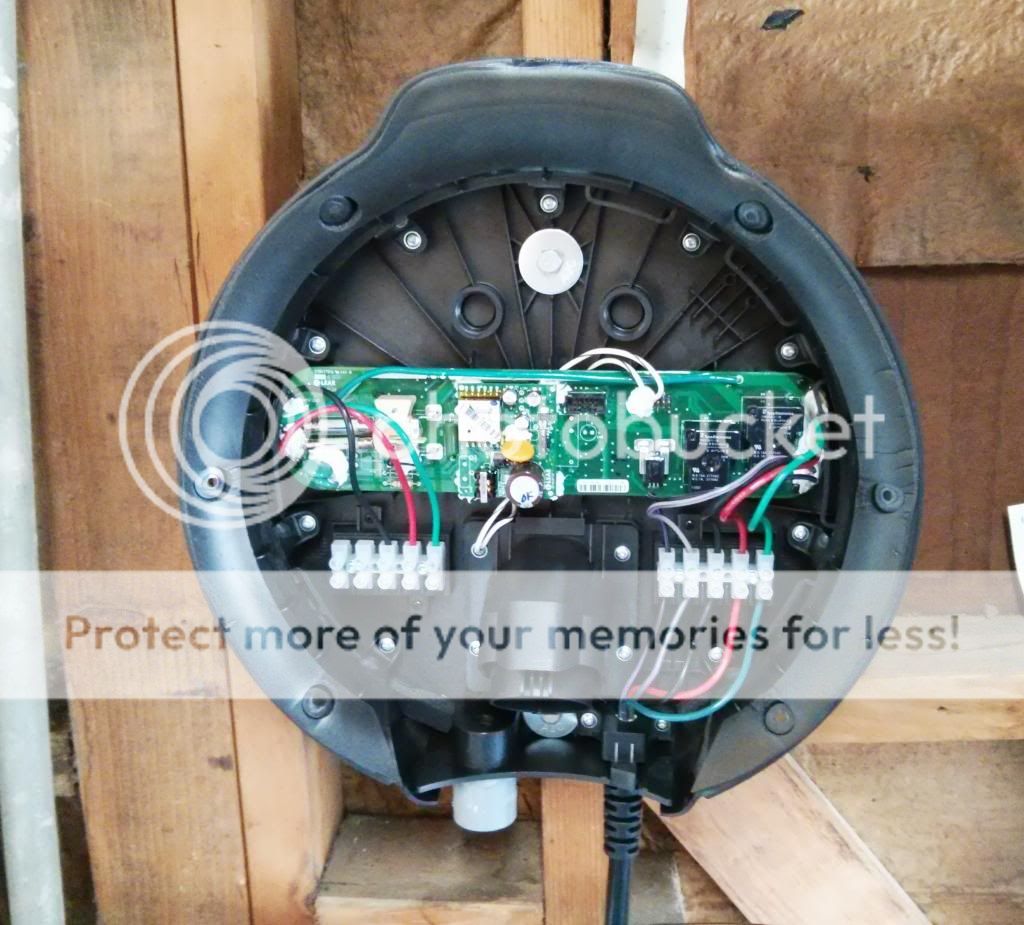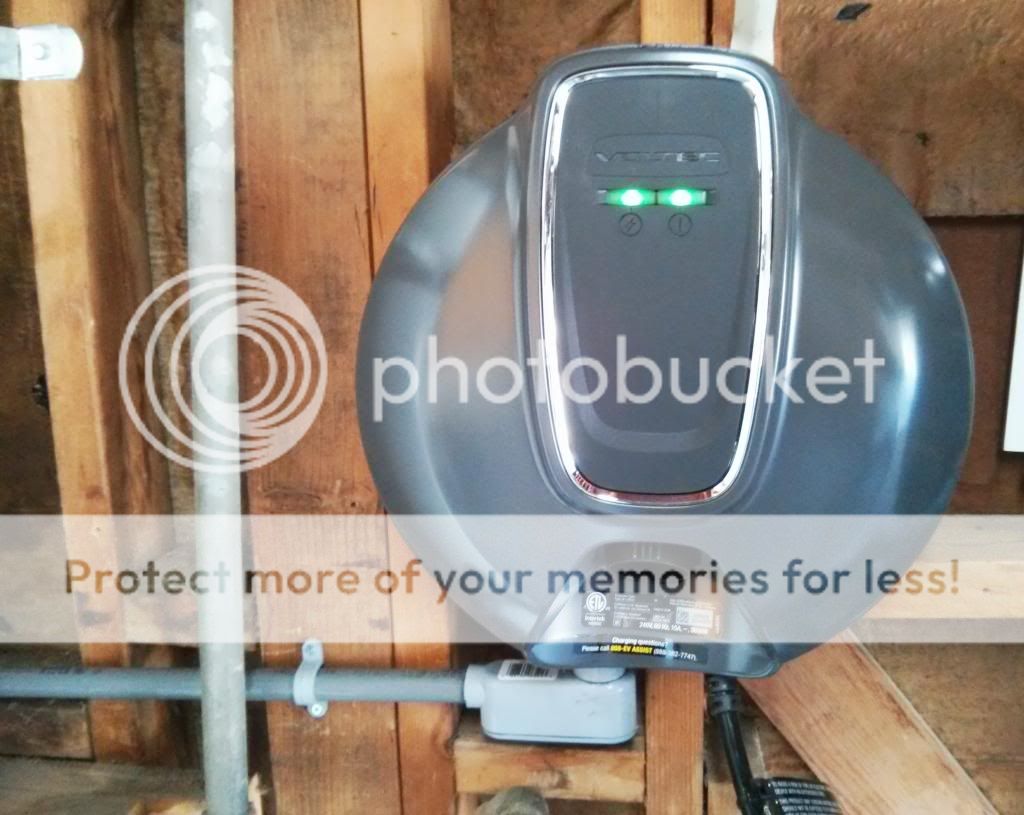I just received my Voltec Level 2 (3.3Kw) charge controller and installed it today. I thought I would share how I installed it, but note that this is not to code as I used a clothes dryer receptacle. I wired the dryer plug directly into a 20A load center, which is then hard-wired to the charger, so it's just as safe as any 220VAC dryer. Also note that I've done quite a bit of wiring, so I'm comfortable wiring high-voltage and confident in my abilities. I'm not recommending this way to anyone, but it worked well for me.
One thing to note is that even though everyone calls these "chargers", they are really just power distribution controllers. The actual charger is in the vehicle. The controller on the wall has some smarts that only switches the load on if there's a car plugged in, the car and charger are a match, and the car signals the controller to turn on the power.
Dryer circuits are typically dedicated 30A circuits, and it's important that only a single load be on this circuit. In other words, if it's used for an EV charger, it can't be used for the dryer, or anything else. Some newer dryers use a 4-prong plug (220V, 220V, Neutral, Ground), but our house has one of the older 3-prong plugs (220V, 220V, Neutral). For an EV charger, the 220V legs will be used, and a Ground is needed, but the Neutral must not be connected at all!. Do not wire the dryer plug's Neutral as the chargers Ground! As the charger requires a Ground, this means an additional ground wire needs to be run, which must connect to the ground wire in your main breaker box. With a 4-prong plug, it's easy (cut off the Neutral, use the other 3), but with a 3-prong plug you need to provide an appropriate ground (and cut off the Neutral). In my case, I had a convenient ground point near the box, which I confirmed is bonded to our service-entrance and breaker box ground. Yes, I know the Neutral wire is connected to the Ground in your breaker box, but you absolutely want to treat the two as discrete wires. Likewise, it's important that the Ground you use goes directly to the ground in your breaker box, and is not a separate earth ground.
OK, now that we have some electrical basics out of the way, here's what the inside of the Voltec controller looks like. The odd white loop of wire (which I tucked under the PCB) is for an optional utility disconnect - where the power company can turn off power to certain devices during periods of heavy load:

Here's the dedicated 20A load center. You can see the dryer plug and ground wire (the screw-down fitting they go through is not visible - they are not just hanging out of the box). The unused Neutral is capped inside the load center. The conduit leads to the charger controller:

And the completed charge controller:

Total cost, not counting charge controller, was around $100.
One thing to note is that even though everyone calls these "chargers", they are really just power distribution controllers. The actual charger is in the vehicle. The controller on the wall has some smarts that only switches the load on if there's a car plugged in, the car and charger are a match, and the car signals the controller to turn on the power.
Dryer circuits are typically dedicated 30A circuits, and it's important that only a single load be on this circuit. In other words, if it's used for an EV charger, it can't be used for the dryer, or anything else. Some newer dryers use a 4-prong plug (220V, 220V, Neutral, Ground), but our house has one of the older 3-prong plugs (220V, 220V, Neutral). For an EV charger, the 220V legs will be used, and a Ground is needed, but the Neutral must not be connected at all!. Do not wire the dryer plug's Neutral as the chargers Ground! As the charger requires a Ground, this means an additional ground wire needs to be run, which must connect to the ground wire in your main breaker box. With a 4-prong plug, it's easy (cut off the Neutral, use the other 3), but with a 3-prong plug you need to provide an appropriate ground (and cut off the Neutral). In my case, I had a convenient ground point near the box, which I confirmed is bonded to our service-entrance and breaker box ground. Yes, I know the Neutral wire is connected to the Ground in your breaker box, but you absolutely want to treat the two as discrete wires. Likewise, it's important that the Ground you use goes directly to the ground in your breaker box, and is not a separate earth ground.
OK, now that we have some electrical basics out of the way, here's what the inside of the Voltec controller looks like. The odd white loop of wire (which I tucked under the PCB) is for an optional utility disconnect - where the power company can turn off power to certain devices during periods of heavy load:

Here's the dedicated 20A load center. You can see the dryer plug and ground wire (the screw-down fitting they go through is not visible - they are not just hanging out of the box). The unused Neutral is capped inside the load center. The conduit leads to the charger controller:

And the completed charge controller:

Total cost, not counting charge controller, was around $100.



